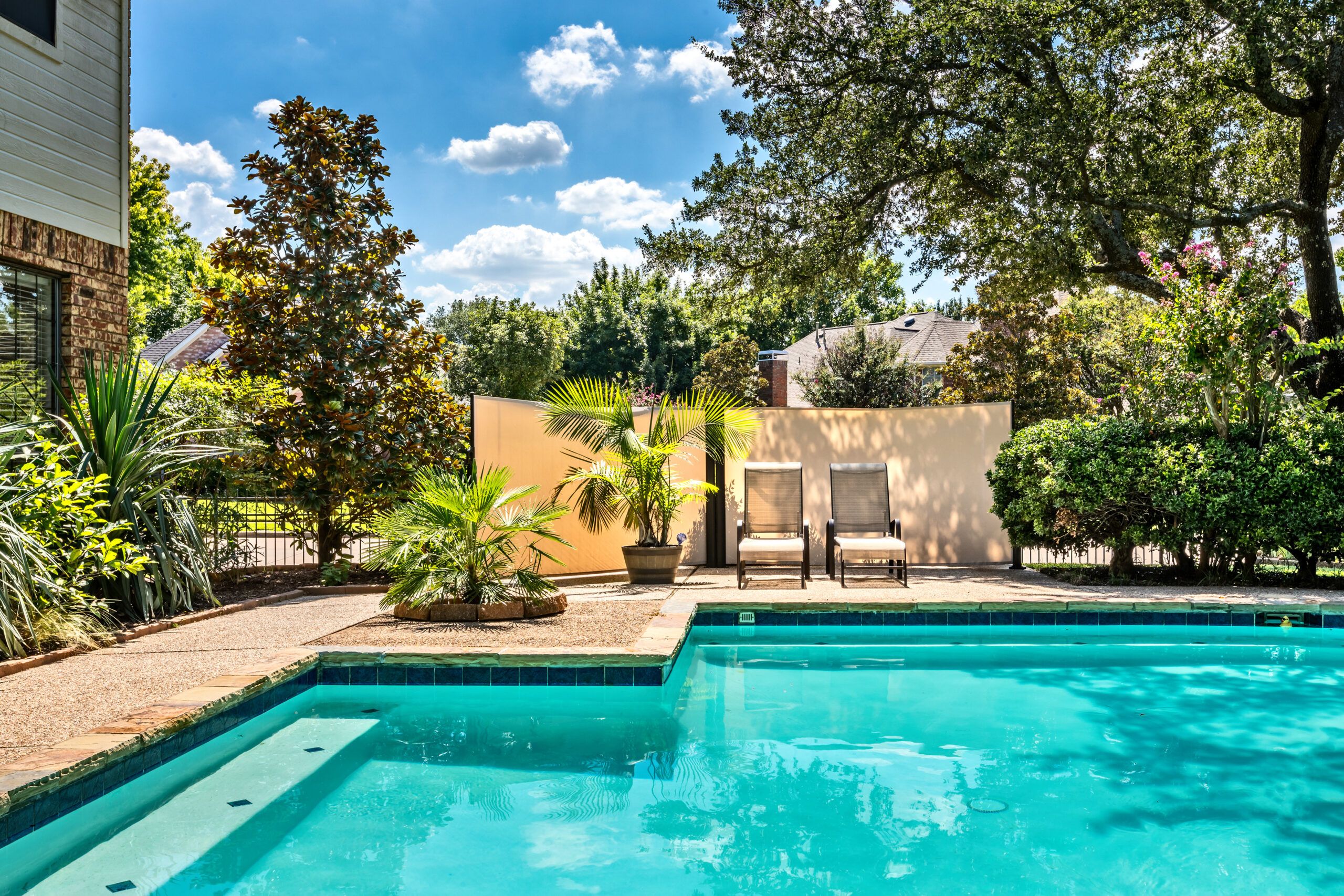Adding a water feature to your yard is a great way to create a comfortable, relaxing atmosphere. Whether you’re thinking about a pool, pond, or fountain, these elements can enhance your yard’s look and feel to make it a true outdoor retreat. In this guide, we’ll take you through a range of options to help you design and build the perfect water feature for your backyard oasis.
Types of Backyard Ponds
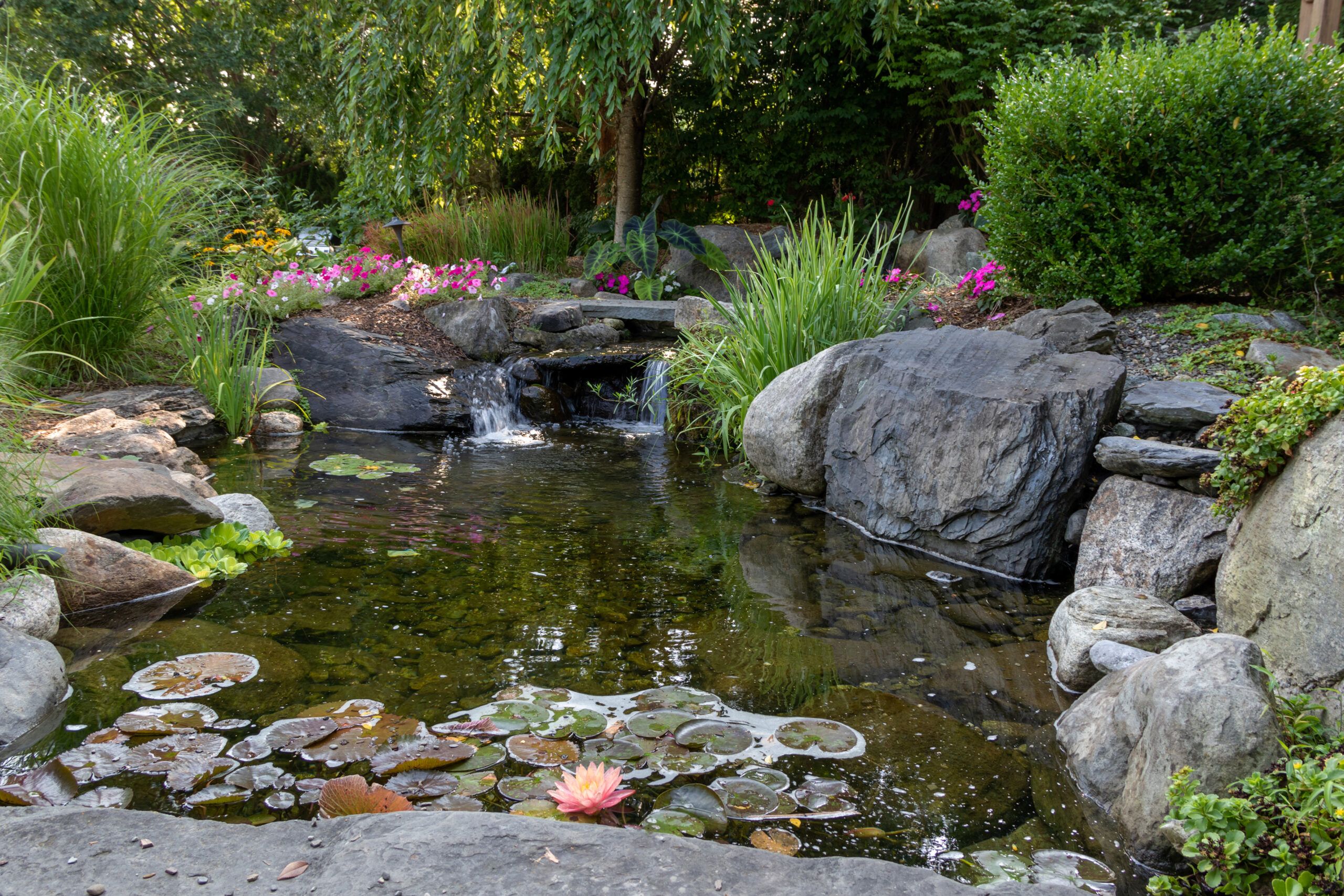
Backyard ponds add a touch of tranquility to any landscape and offer a welcoming habitat for aquatic plants and wildlife. You don’t need a huge budget or a sprawling yard to enjoy the benefits of a water feature. With careful planning and a bit of elbow grease, you can build a small, beautifully landscaped pond—complete with fish—for between $250 and $2,500, according to Angi.
Crafting this lush oasis requires durable liners, reliable pumps, and efficient filters, along with a commitment to regular maintenance. See the full DIY tutorial to learn more about optimal size, depth, and building materials. Your pond will become a focal point of your yard for family and guests, whether it’s nestled in a quiet corner of your yard or near a deck or patio.
Free-Form Pond
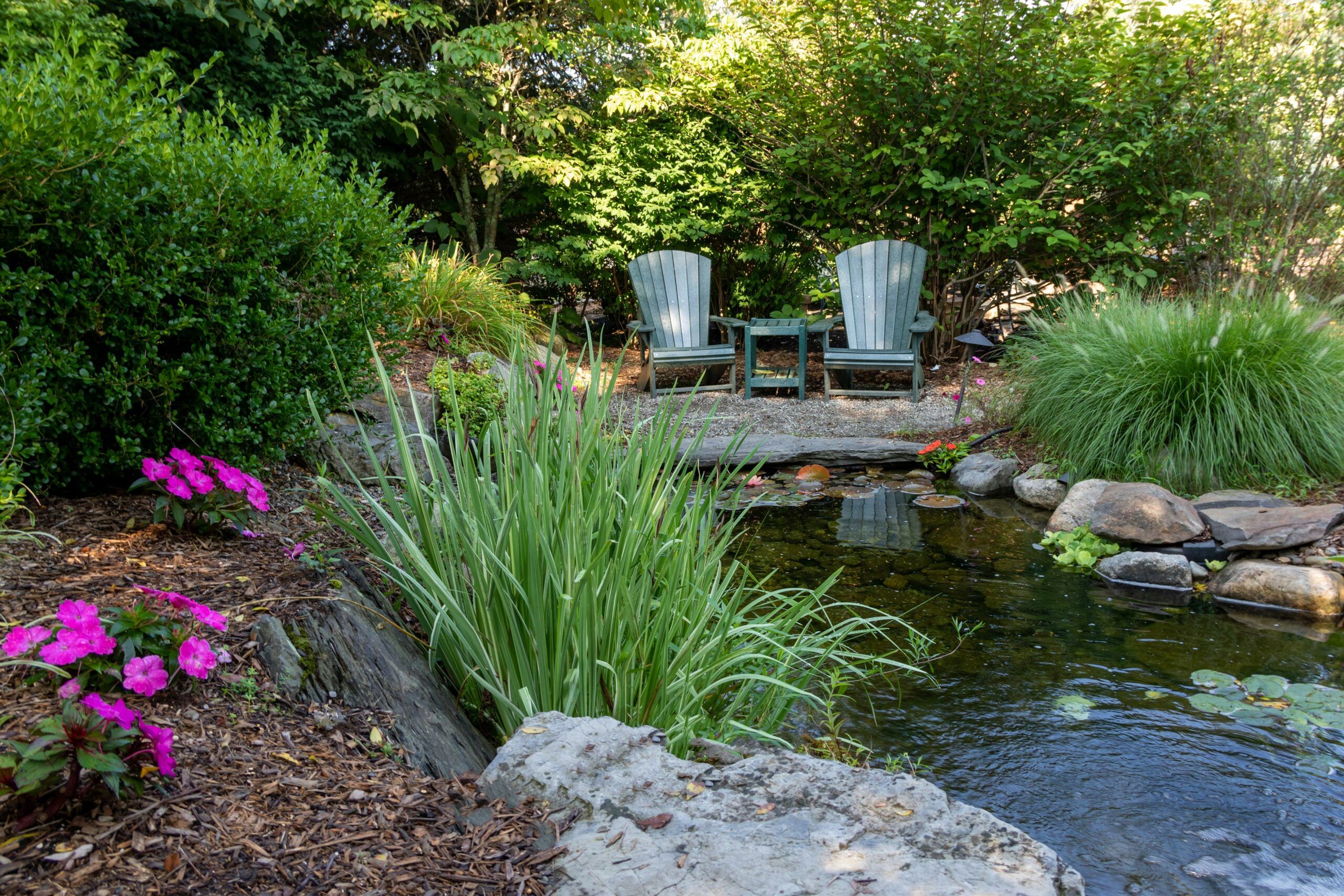
A free-form pond offers flexibility in design and can be customized for any landscape. When planning your pond, choose a noticeable spot away from large trees or play areas. Have electric and gas lines marked before digging. Select an appropriate size and depth based on your yard and desired features, and use high-quality materials for longevity and ease of maintenance. You can incorporate various rocks, plants, and even a small waterfall to create a natural-looking ecosystem.
Lily Pond
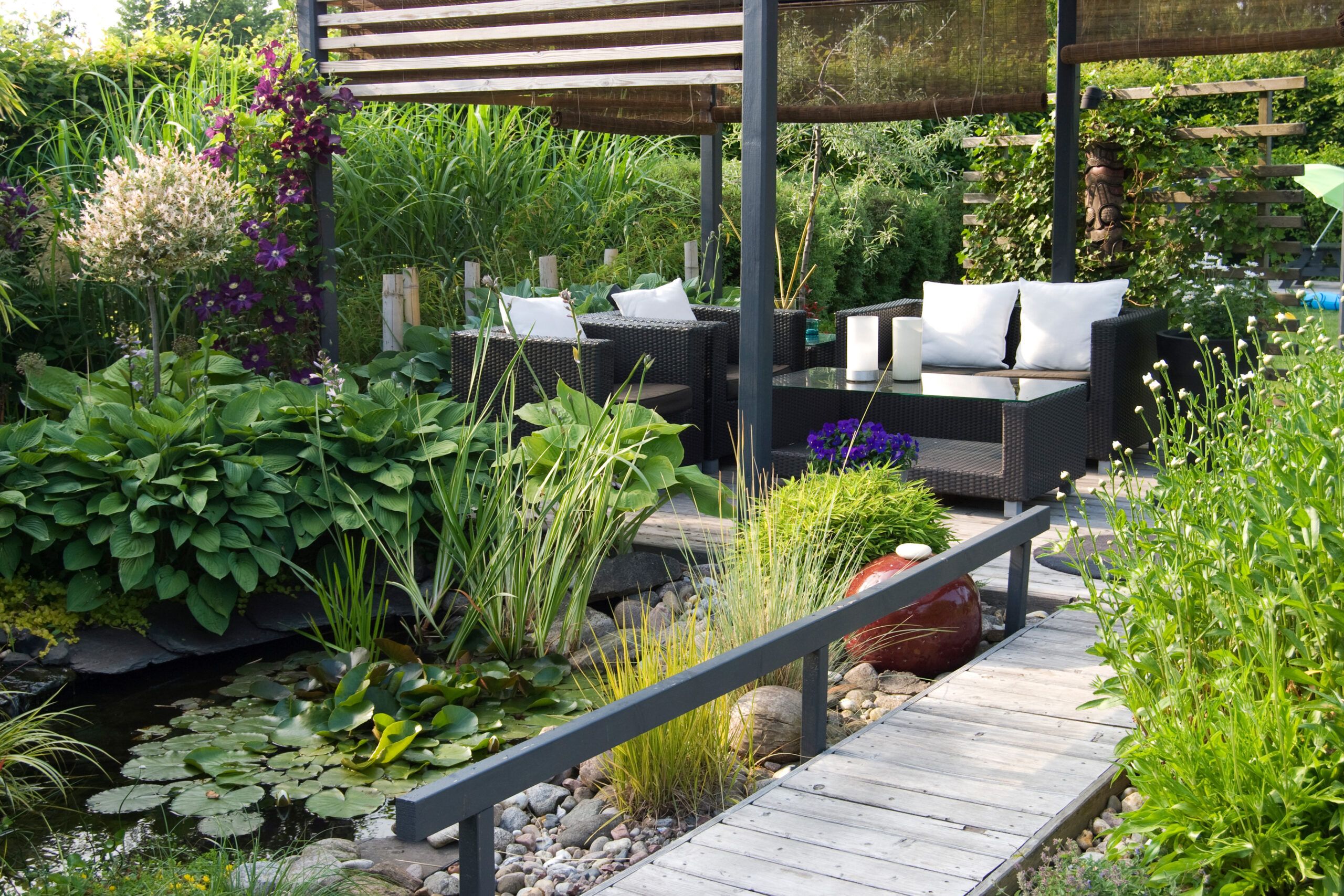
A lily pond can add a touch of Zen to your patio or garden. This compact solution is easy to care for and can be constructed using simple materials. Build a sturdy box to contain the pond and install a thick pond liner to hold the water. Use a plug-in aerator for circulation and oxygenation. Plant hardy water lilies for beautiful blooms from June through August.
With proper care, your lily pond will provide years of enjoyment. In fall, simply shear off the shoots, and the lilies will return bigger and bolder the following spring.
More Backyard Pond Options
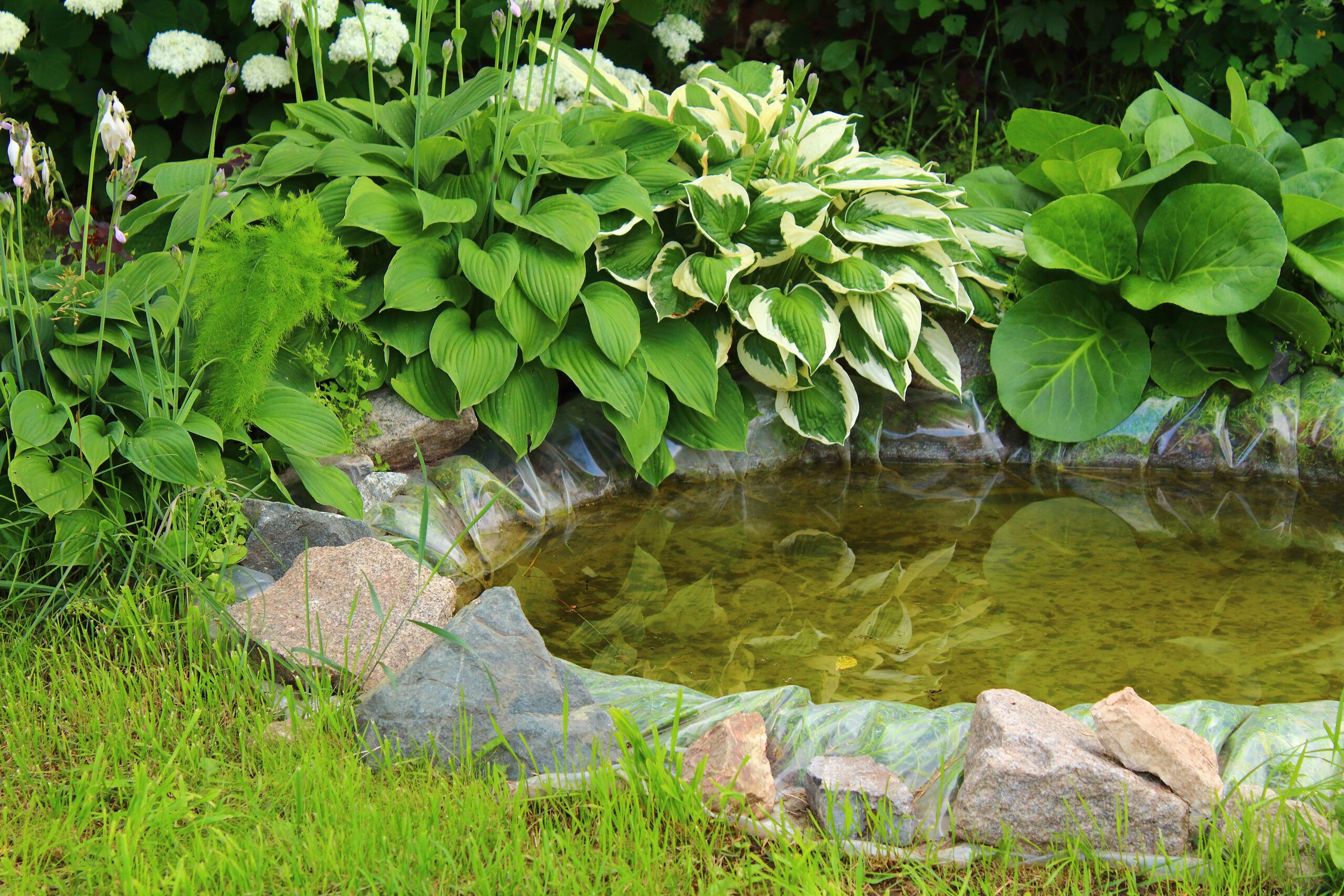
Ponds come in various sizes and styles, from grand installations to small water features. Each type of pond offers unique benefits and challenges, so choose the one that best fits your lifestyle and landscape. Consider these options when planning your backyard pond:
- Bog gardens: These are shallow ponds with wet, marshy areas that are perfect for growing moisture-loving plants. Bog gardens add a unique, natural element to your backyard and can attract wildlife like frogs and dragonflies.
- Container ponds for small spaces: Ideal for patios, balconies, or small yards, container ponds use pots or barrels to create a miniature pond. They are easy to set up and maintain, allowing you to enjoy the tranquility of water features in a limited space.
- Koi ponds: These are specially designed to house koi fish, which require deeper water and filtration to thrive. Koi ponds are a great choice if you want a visually stunning and dynamic pond with vibrant, moving colors.
- Natural swimming ponds: A blend of a traditional swimming pool and a natural pond, these are designed for swimming and are often chemical-free, using natural filtration through plants. They provide a refreshing and eco-friendly way to enjoy your backyard pond.
- Waterfall ponds: Featuring cascading water, these ponds create a soothing sound and enhance the aesthetic appeal of your backyard. Waterfall ponds can be integrated into any size pond and provide additional oxygen to the water, supporting aquatic life.
Pondless Waterfall
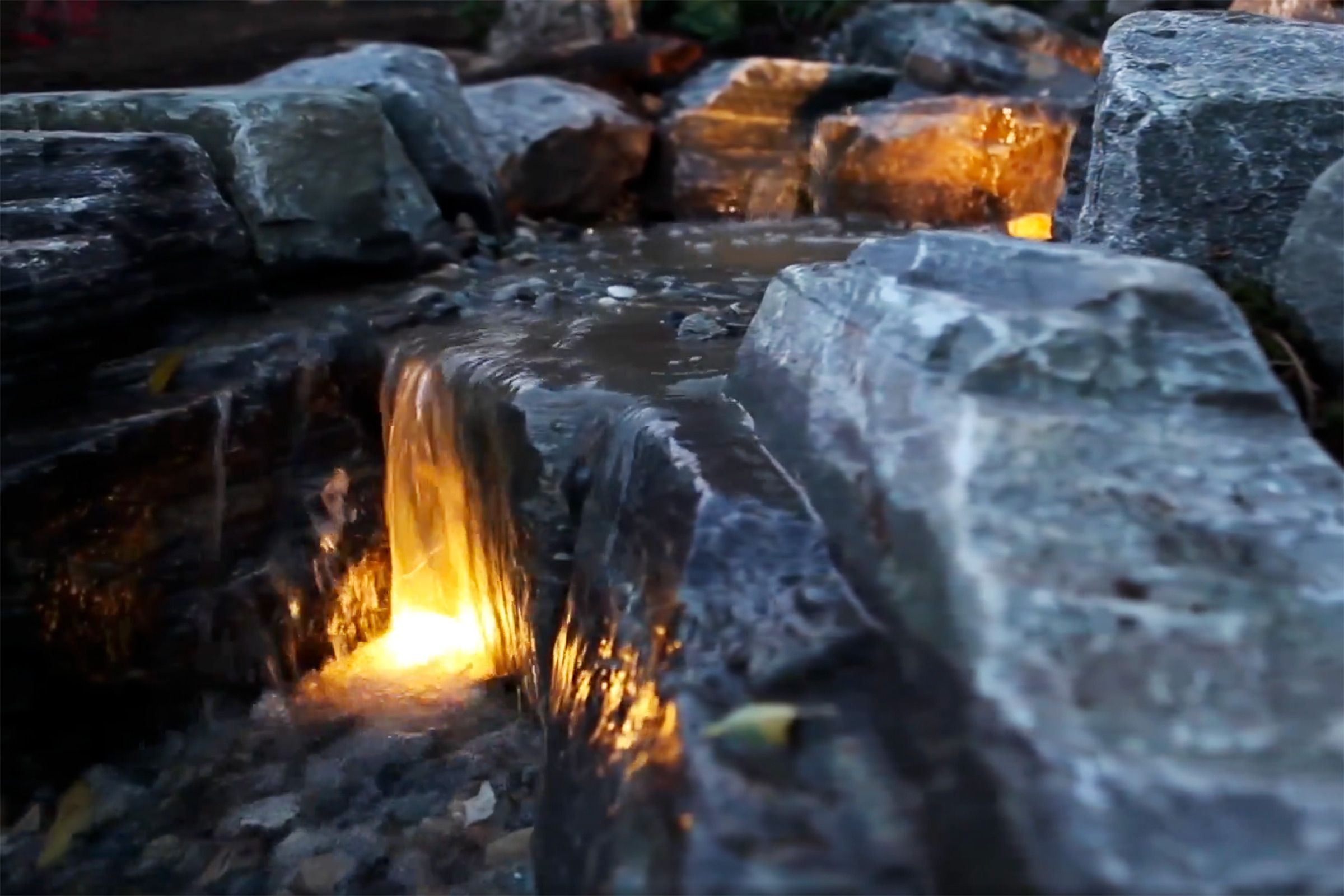
If you want the soothing sound of running water without committing to a full pond, consider building a pondless waterfall. This natural-looking addition to your yard comes with lower maintenance requirements compared to traditional ponds and reduced safety concerns, as there’s no standing water. You can incorporate this design into various landscape styles.
To create a pondless waterfall, excavate the area, install a water reservoir, and arrange rocks to create the waterfall effect. You can have a beautiful water feature without the commitment of a full pond. For step-by-step instructions, watch this video tutorial.
Types of Garden Fountains
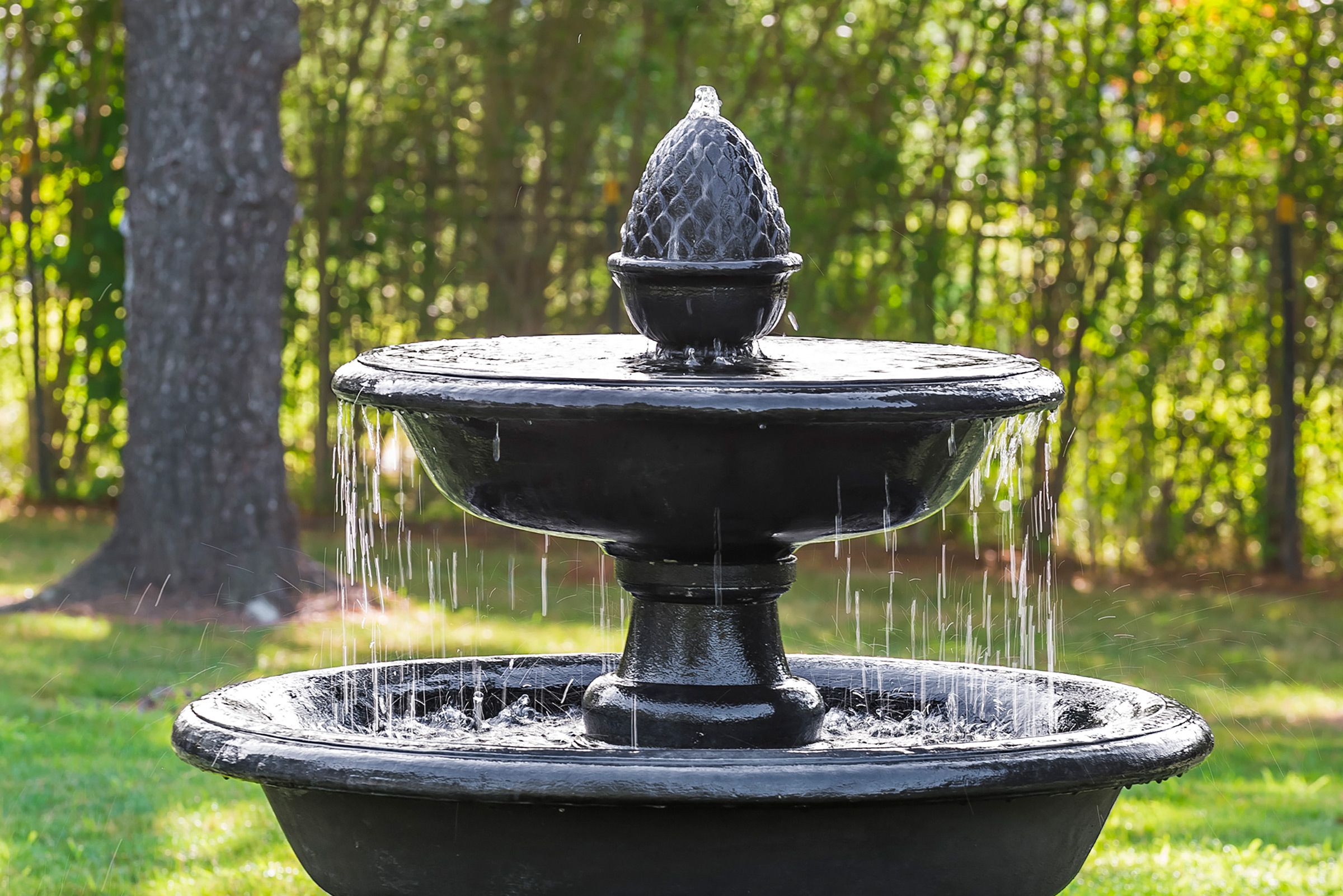
Garden fountains provide a calming ambiance and can dramatically enhance your landscape’s appeal. These versatile water features come in various styles, from classical tiered towers to contemporary orbs. The fountain’s design determines its aesthetic, how the water flows, and the sound it creates.
When choosing a fountain, consider the following factors:
- Available space in your yard: Consider the amount of space available to ensure the fountain doesn’t overwhelm or underwhelm the area. A larger fountain may require more space to create a balanced look, while a smaller fountain can fit well in a cozy corner or patio.
- Compatibility with your existing landscape design: Choose a fountain style that complements your current garden aesthetic, whether it’s modern, rustic, or classical. This will help create a cohesive and harmonious look in your outdoor space.
- Desired sound level: Determine how loud you want your fountain to be based on its intended purpose—whether for relaxation with a gentle bubbling sound or for a more dynamic ambiance with a louder splashing effect. The sound level can impact the overall atmosphere of your yard.
- Maintenance requirements: Some fountains require regular cleaning and upkeep to keep them working. Lower-maintenance options may be a better pick if you prefer a hassle-free water feature.
- Power source (electrical or solar): Decide between an electrical or solar-powered fountain based on accessibility to power outlets and your preference for eco-friendly options. Solar fountains can reduce energy costs, while electrical ones provide consistent performance regardless of weather conditions.
DIY Ornamental Fountain
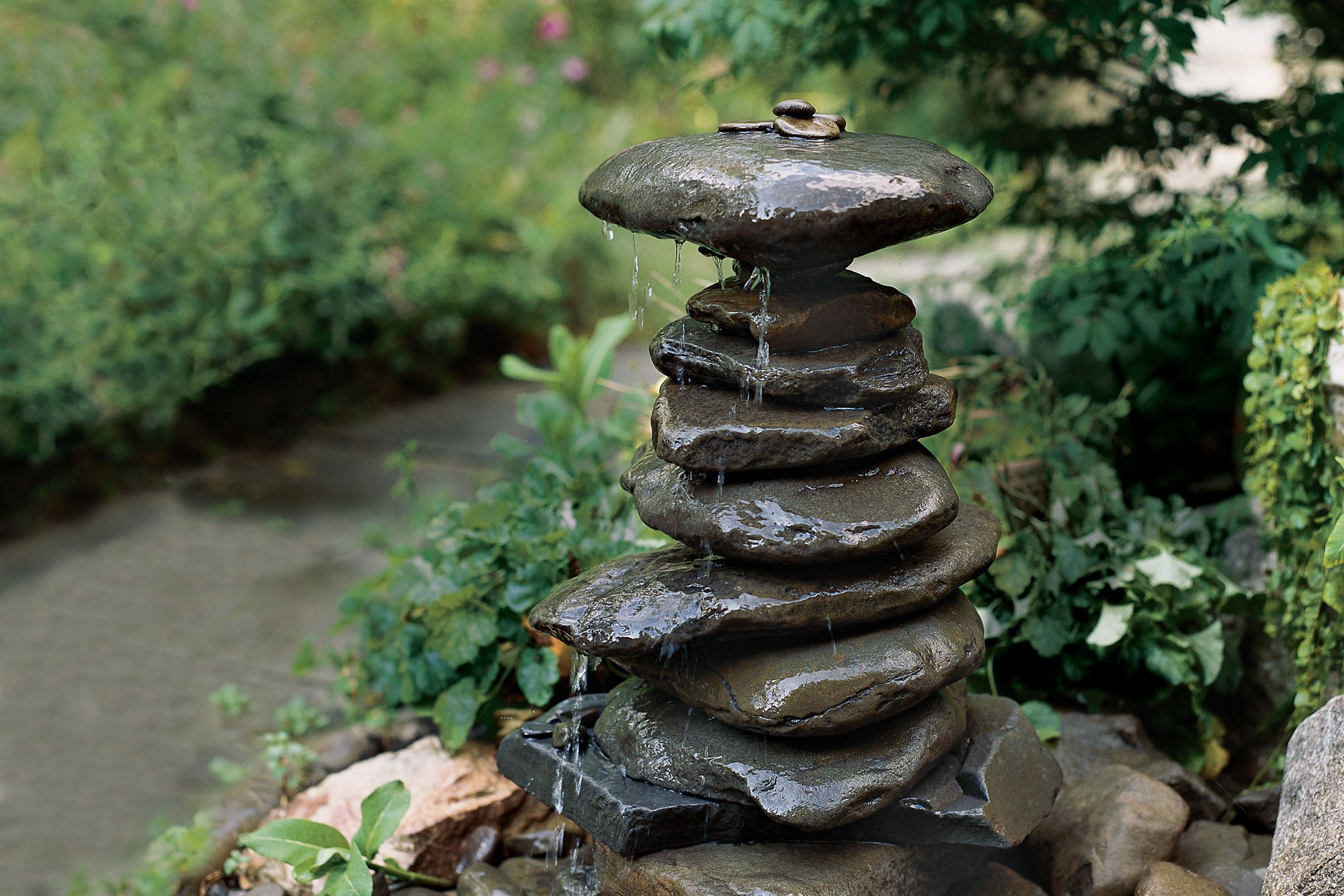
Building your own fountain can be a rewarding weekend project. With some creativity, you can transform various garden ornaments into unique water features. Here’s a basic overview of the process:
- Choose your fountain base (e.g., a decorative urn, stack of rocks, or repurposed item).
- Install a submersible pump.
- Create a water reservoir.
- Add plumbing and electrical connections.
- Finish with decorative elements and landscaping.
You can build your own fountain in a day by following our step-by-step guide.
Salvaged Urn Garden Fountain
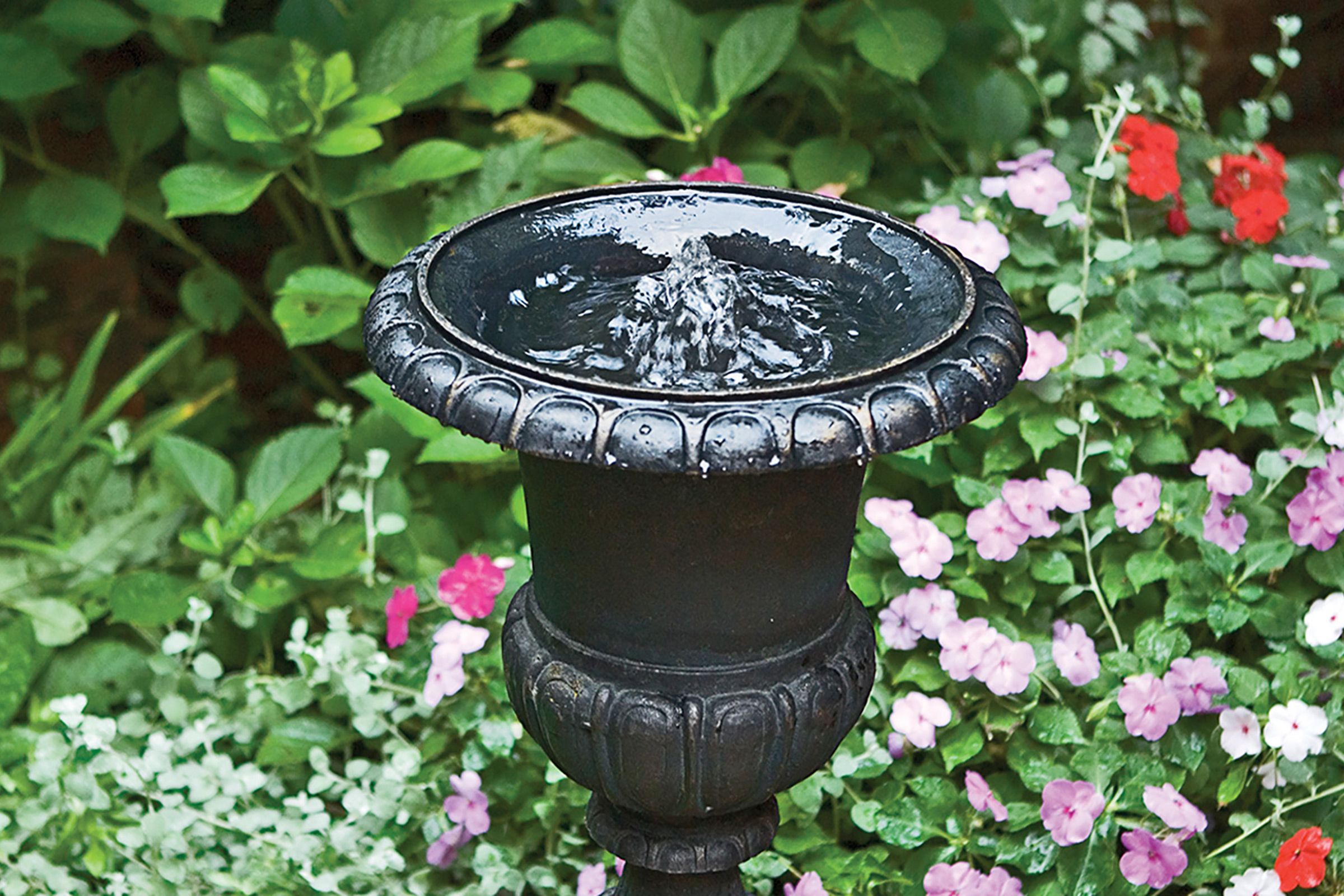
Repurposing a salvaged urn into a garden fountain is an eco-friendly and cost-effective way to add charm to your yard. This project doesn’t require many materials and can be completed in just a few steps:
- Clean and prepare the urn.
- Create a stable base for the urn.
- Install a submersible pump.
- Fill the urn with water and enjoy your new fountain.
- Add decorative elements like river rocks or plants.
For a full walkthrough, read our step-by-step guide here.
Privacy Fountain
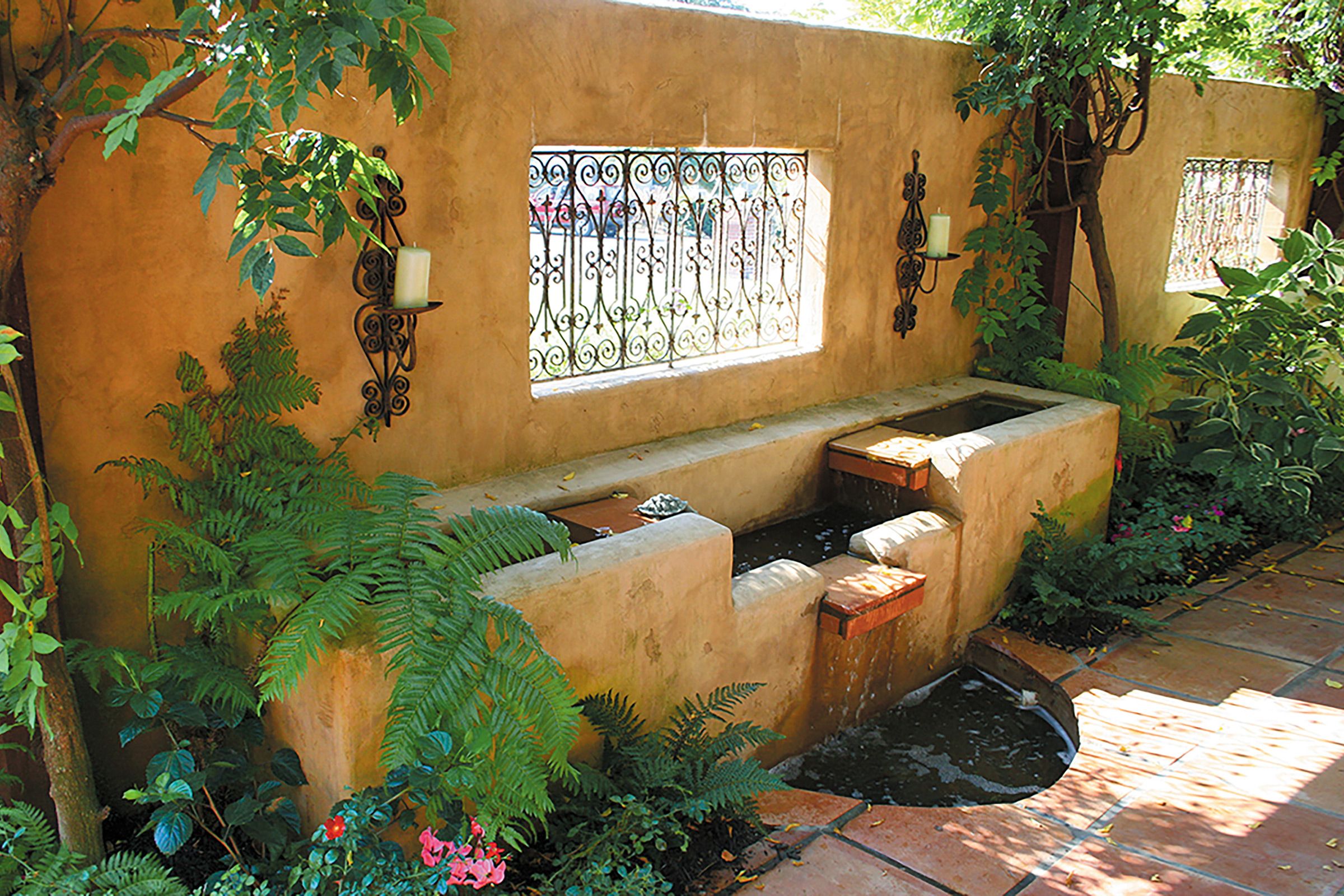
Fountains can serve a dual purpose by providing both visual interest and privacy to your outdoor space. The sound of running water can mask unwanted noise from neighbors, traffic, or AC units. By strategically placing your fountain, you can create a more secluded and peaceful outdoor environment. Consider these fountain styles for added privacy:
- Custom-designed water walls: These fountains feature water cascading down a flat surface, creating a continuous curtain of water that can serve as a striking visual element. Custom water walls are perfect for adding a modern touch while effectively masking noise from surrounding areas.
- Multi-tiered fountains with dense foliage: Combining a multi-level fountain with surrounding plants or shrubs can enhance privacy and create a lush, secluded feel in your yard. The layered sound of water from different levels provides a soothing ambiance while helping to block out unwanted noise.
- Tall, freestanding fountains: These fountains can stand on their own and often have a significant height, making them ideal for creating a barrier that offers both privacy and a dramatic focal point.
- Wall-mounted fountains: Attached to a vertical surface, wall-mounted fountains save space and add a decorative element to an otherwise plain wall. They provide the soothing sound of flowing water that can help muffle noises, making them suitable for smaller gardens or patios where privacy is a concern.
Solar-Powered Fountain
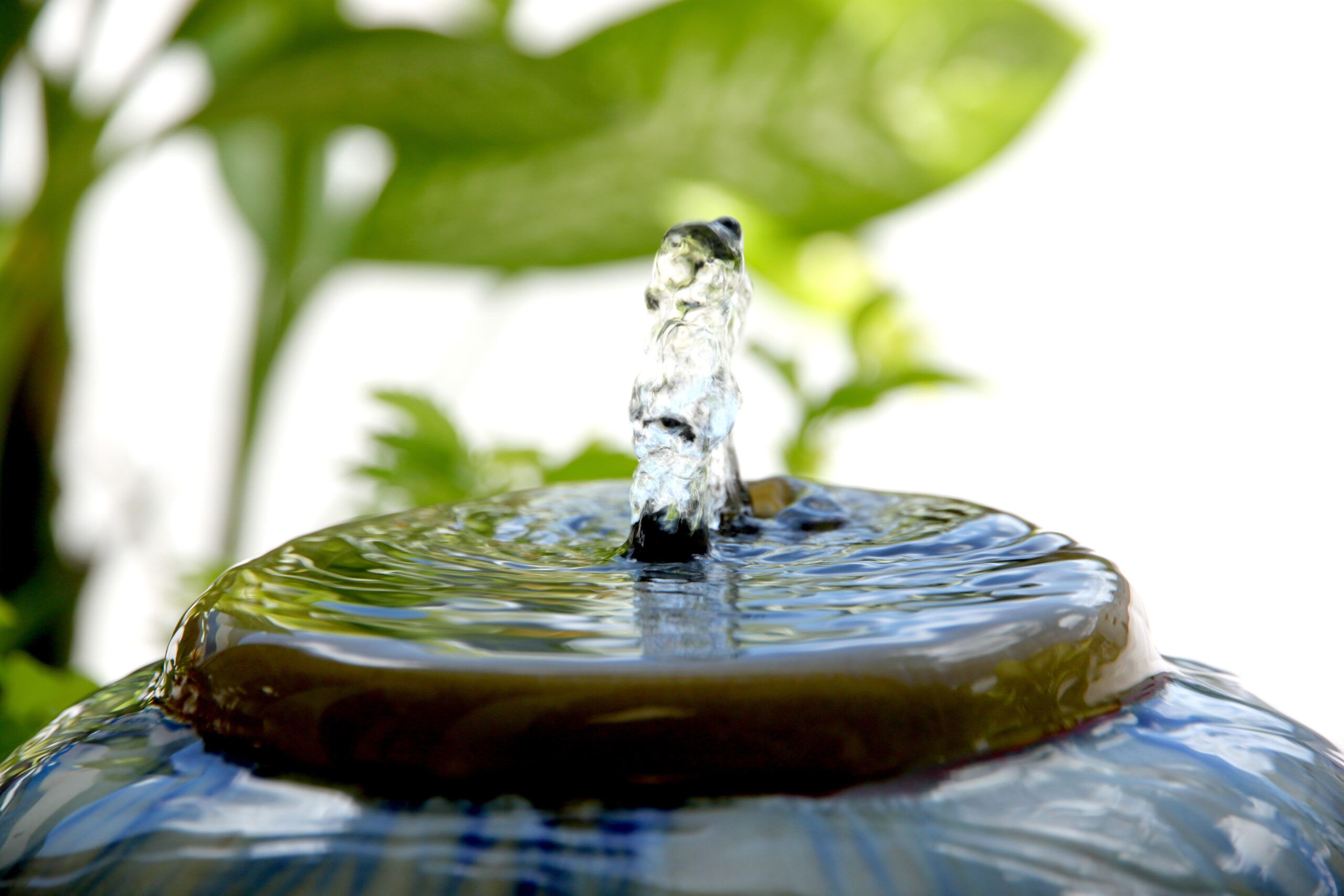
Solar-powered fountains offer an eco-friendly and cost-effective solution for adding a water feature to your yard. These fountains harness the sun’s energy to power the pump, eliminating the need for electrical wiring or an outlet. You can place a solar fountain anywhere where it will receive ample sunlight. Learn how to install a solar-powered fountain by watching this video guide.
Maintaining Your Fountain

Maintenance keeps your fountain running smoothly. Regular upkeep prevents issues like algae growth, pump failure, and water quality problems. Clean the fountain basin and pump regularly, and periodically inspect and clean the pump filter. Monitor water levels and top off as needed. Use appropriate water treatments to prevent algae and mineral buildup. In colder climates, winterize your fountain. Addressing any issues as soon as you notice them will help keep your fountain in top condition.
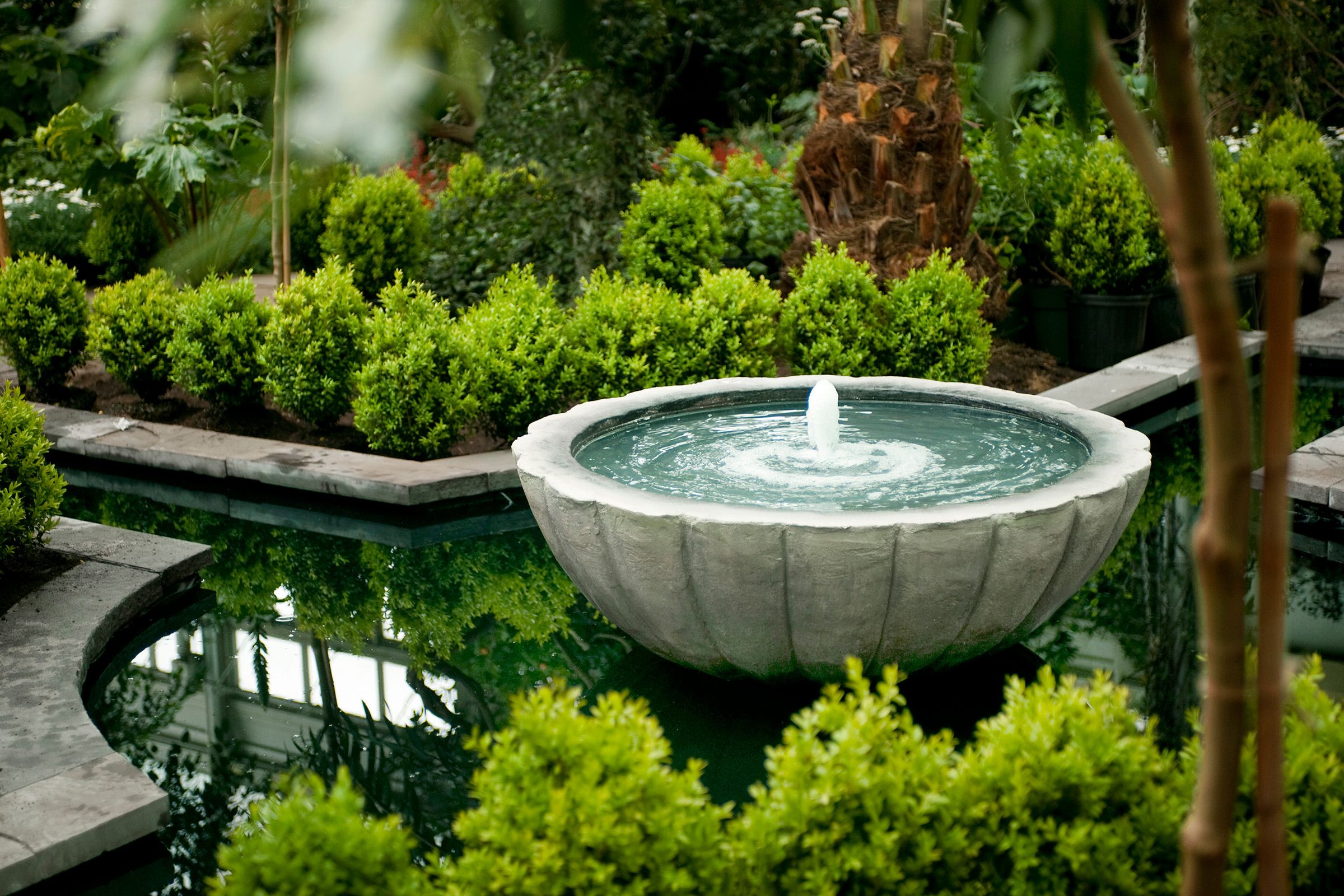
Here are some additional maintenance tips to help ensure your fountain runs smoothly:
- Add a small amount of white vinegar to the water to discourage algae growth.
- Consider using a fountain cover during periods of non-use.
- Install a timer to control operating hours.
- Trim nearby plants to prevent debris from falling into the fountain.
- Use distilled water to reduce mineral buildup.
Factors To Consider When Installing a Backyard Pool
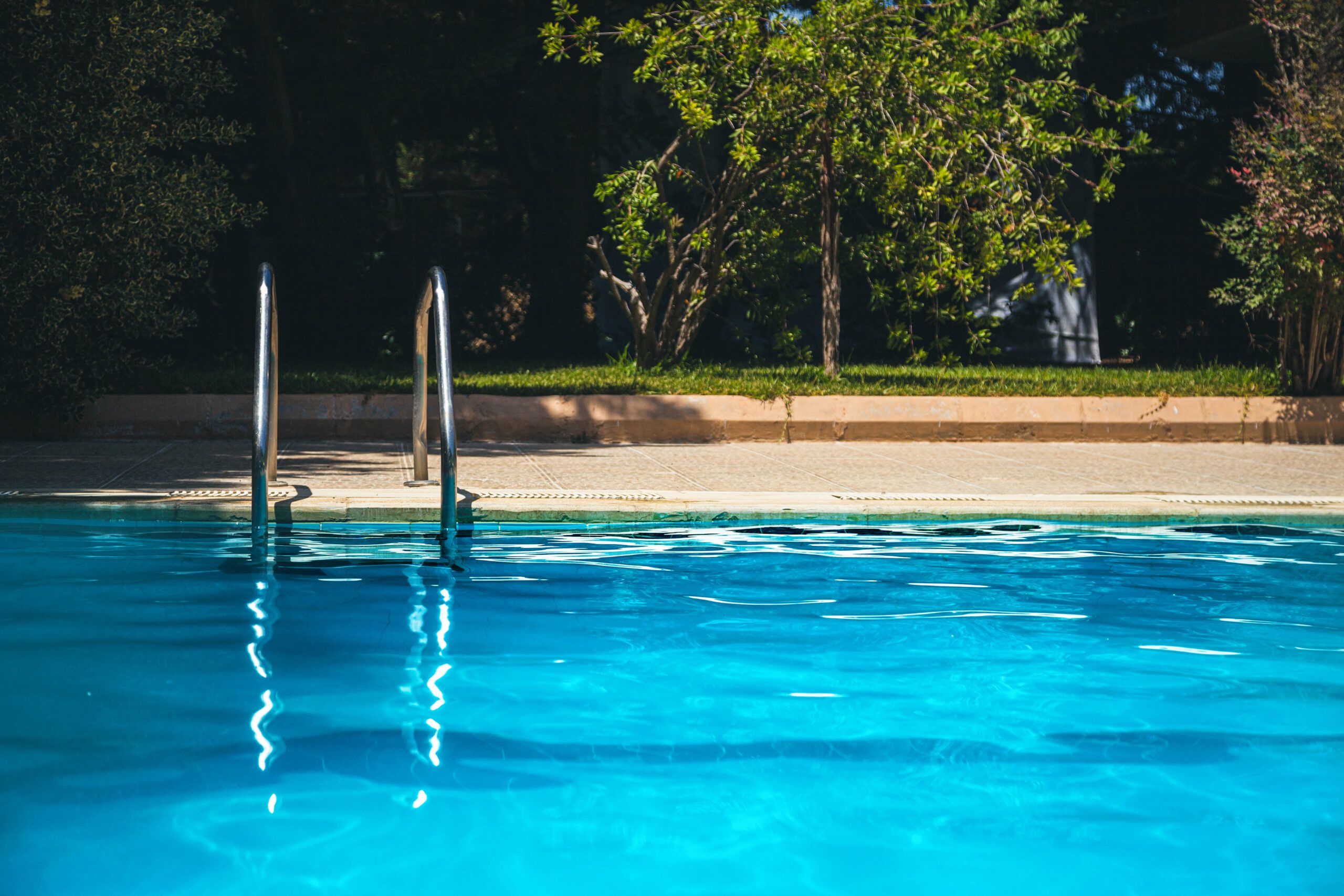
Adding a backyard pool is a big investment, but it can provide years of enjoyment for your family. Before committing to a pool installation, think about these factors:
- Available space in your yard: Assess the amount of available space to determine the appropriate size and shape of your pool, ensuring it fits well within your landscape without overwhelming the area. Consider remaining space for other outdoor activities.
- Desired pool features: Decide on the features that will add to your family’s enjoyment, such as a diving board for added fun or a hot tub for relaxation. These features can affect the pool’s size, design, and overall cost.
- Initial installation costs and ongoing maintenance expenses: Consider the upfront cost of installing a pool as well as the long-term expenses for pool maintenance, such as cleaning, chemical treatments, and potential repairs. According to Angi, an in-ground pool costs $65,500 to install.
- Local zoning laws and permit requirements: Research local zoning laws and get any necessary permits before starting the installation to ensure compliance with regulations. This can help prevent delays and potential legal issues from unauthorized construction.
- Safety measures, including fencing and covers: Plan for essential safety features, such as fencing, pool covers, and alarms, to protect children, pets, and visitors. Safety measures help prevent accidents and may be legally required depending on your location.
Pool Maintenance
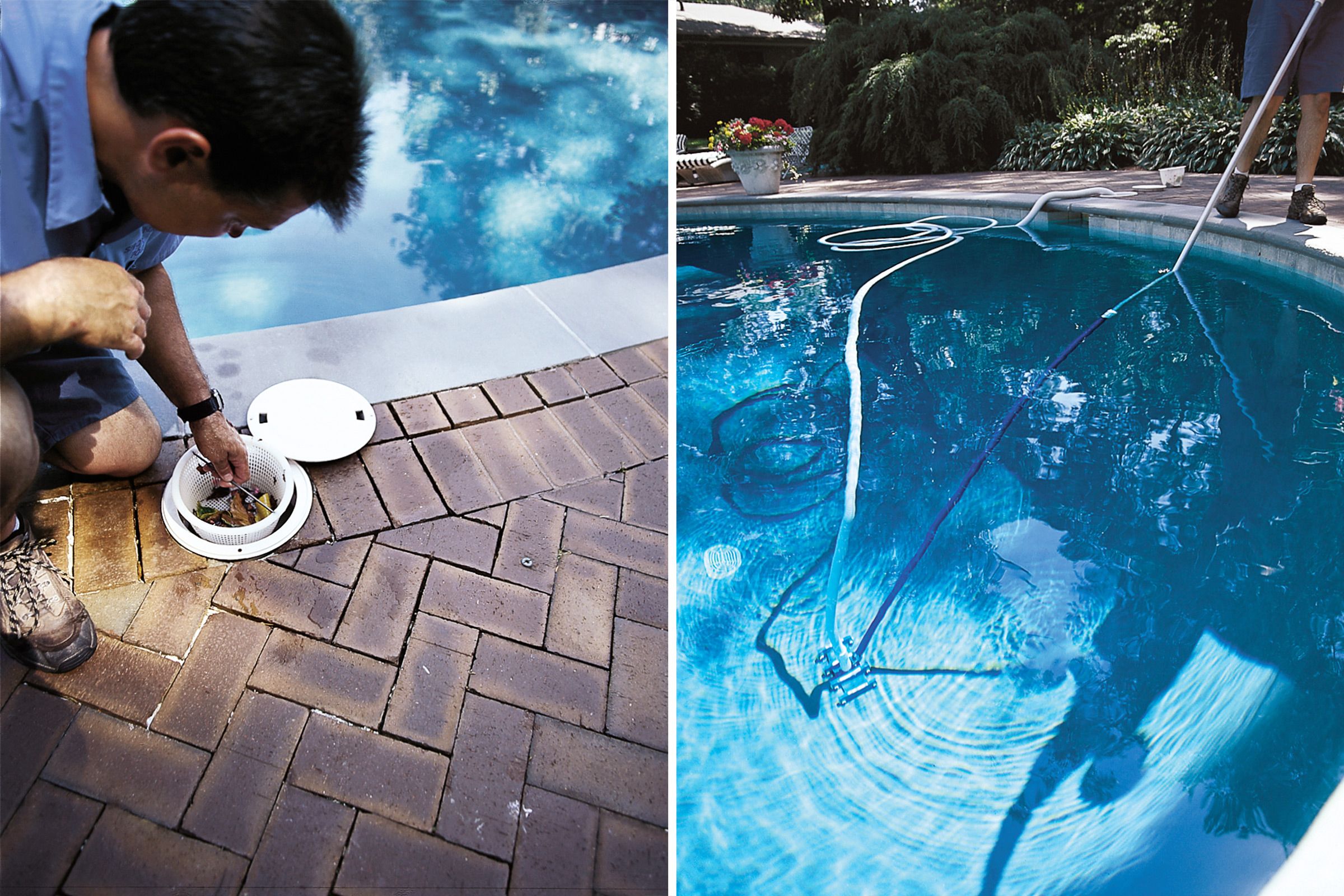
Regular pool maintenance keeps your water clean, safe, and inviting. A well-maintained pool not only looks better but also keeps your equipment working properly. Follow these maintenance steps:
- Backwash the filter system.
- Brush walls and floor to prevent algae growth.
- Clean the pool and skimmer baskets.
- Inspect and maintain pool equipment.
- Test and balance water chemistry regularly.
- Vacuum the pool as needed.
Can You Heat Your Pool With an Air Conditioner?
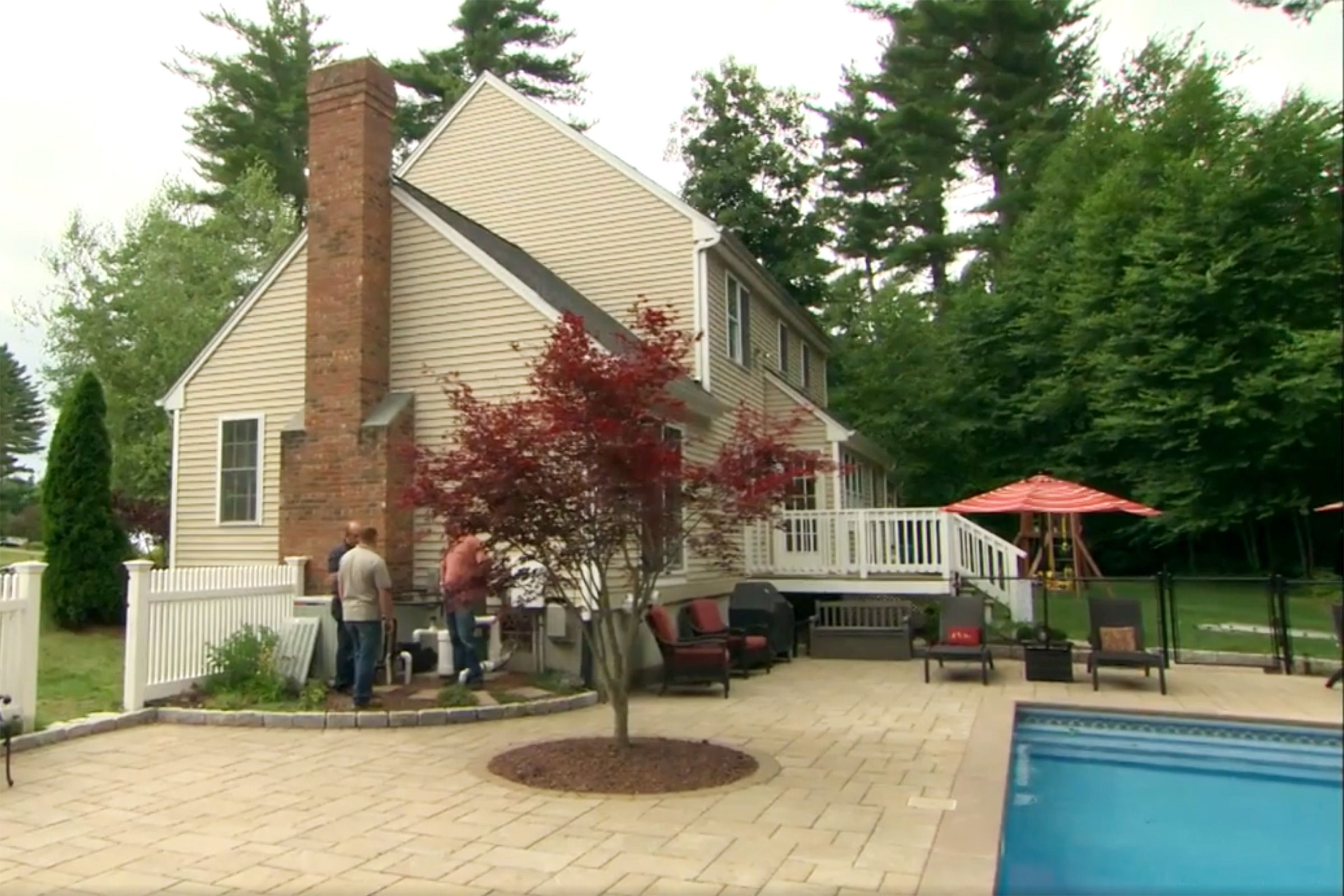
Using the heat your air conditioner produces is a creative way to heat your pool while reducing energy costs. This method requires that you install a device to capture the waste heat from your AC unit and transfer it to your pool water. Repurposing waste heat is energy efficient and offers an extended swimming season at lower operating costs compared to traditional pool heaters.
While this system requires professional installation, it can be a cost-effective solution for pool heating in the long run. In this video, you can watch This Old House plumbing and heating expert Richard Trethewey install this device.
Does My Pool Area Need an Outdoor Shower?
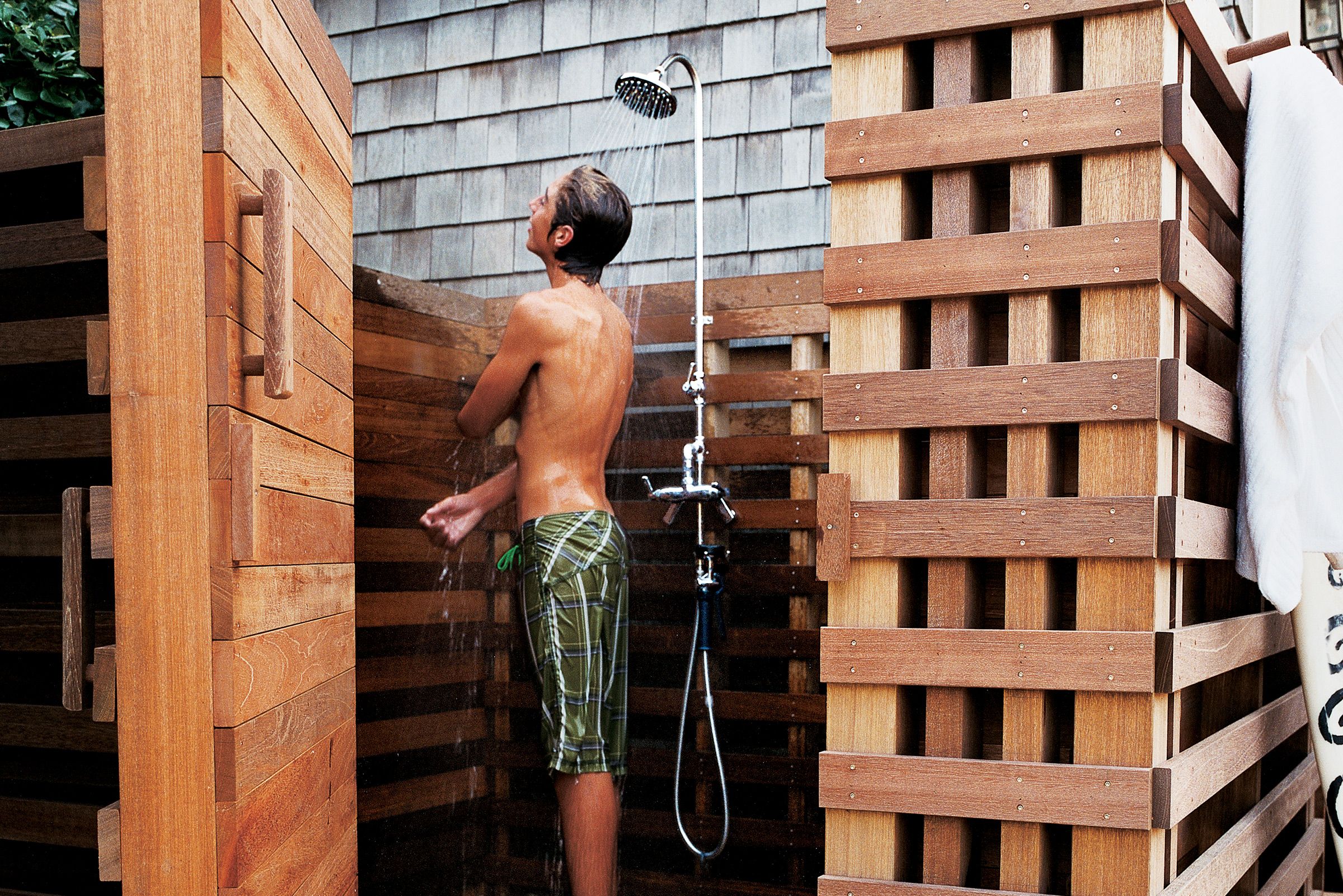
An outdoor shower is a practical addition to any pool area, allowing swimmers to rinse off before and after taking a dip. Outdoor showers range from simple foot sprayers to elaborate enclosures with hot and cold water. When planning an outdoor shower, consider these factors:
- Design compatibility with your existing landscape: Choose an outdoor shower design that complements the style and aesthetic of your current landscape and pool area.
- Drainage options: Consider how the water will drain away from the shower area to prevent pooling or water damage. Proper drainage is essential to maintain hygiene, avoid slippery surfaces, and protect surrounding landscaping.
- Materials that can withstand outdoor conditions: Select materials that are durable and resistant to moisture, sun exposure, and temperature changes, such as stainless steel, stone, or treated wood.
- Privacy needs: Determine the level of privacy required based on your yard’s visibility and your comfort level, which might involve installing screens, fences, or plants around the shower area.
- Water source and plumbing requirements: Plan for a suitable water source, whether it’s a connection to your home’s plumbing or a dedicated outdoor water line. Consider the need for hot and cold water lines and the complexity of installation to ensure the shower is both functional and convenient.
